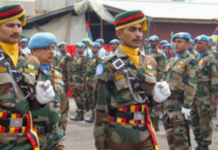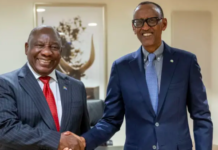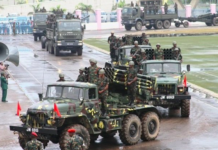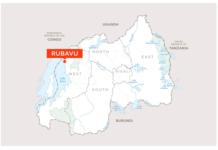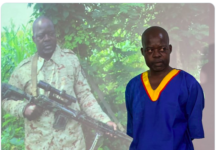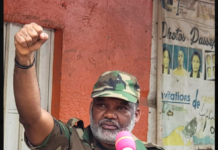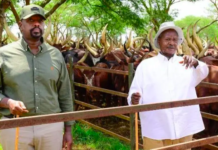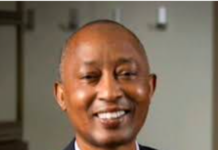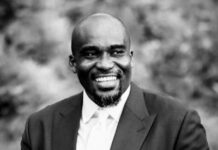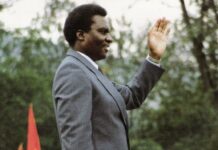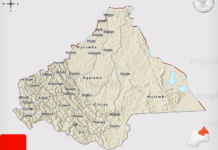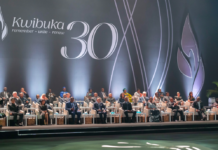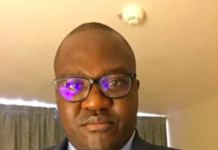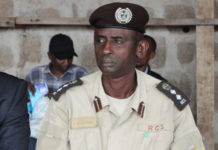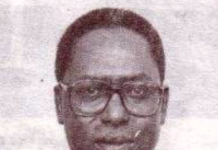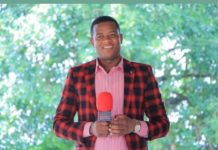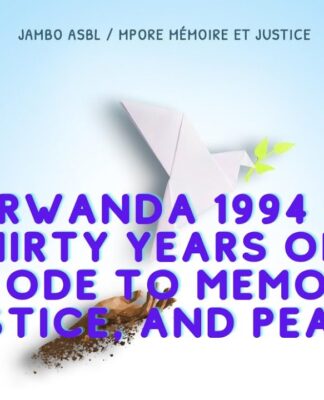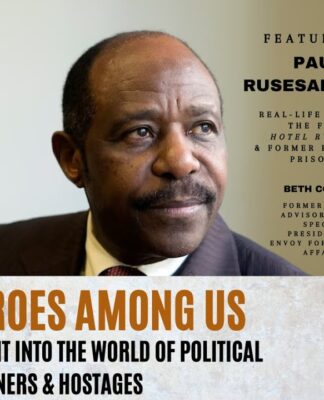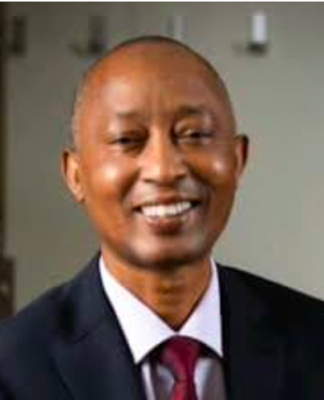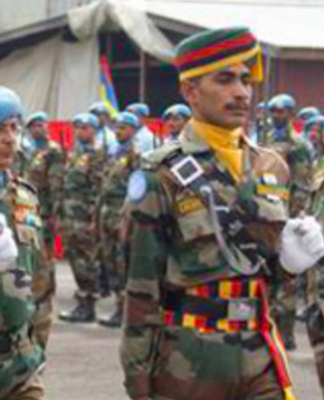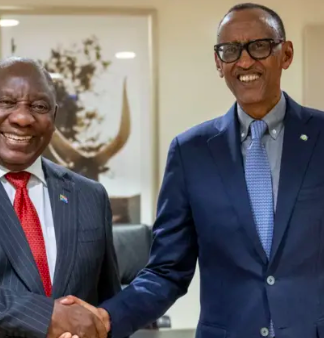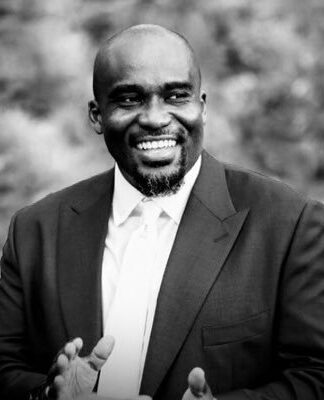Established in 1994, the International Criminal Tribunal for Rwanda (ICTR) definitively closed its business in 2015. On December 14, 2015, the ICTR Appeals Chamber delivered its judgment in the case of the six accused of
Butare.[1] As described by Pierre Hazan, Professor at the University of Neuchâtel and editorial advisor of JusticeInfo.net, “it was the longest trial, the most expensive and probably the most unsuccessful of international justice. It ended less than a year ago and has been a laboratory of errors, malfunctions and inadequate behavior of the international criminal Tribunal for Rwanda (ICTR), for the greatest tragedy of the victims […] The trial of the “Butare Six” began only in 2001 to be completed in 2011, before a judgment is given and that appeal may be lodged. The accused spent 15 years in pre-trial detention. [… ] A trial which, by its errors, was emblematic of international justice which was hardly looking for its brands and, to his credit, had virtually no precedent to lean on.”
On appeal, three of the six accused, condemned to life imprisonment by the Trial Chamber, had their sentences reduced to 47 years in prison. Three others were condemned to reduced sentences for which simplification immediately opened for them the door to freedom. A close reading of the “TAKING INTO ACCOUNT” arguments for these three people early released and still cloistered in a safe house in Arusha (Tanzania) does not offer a reasonable understanding of why they have not been quite simply acquitted.
One of those sentenced to 47 years openly feels victim of blind and deaf justice that simply ignored his defense main arguments. His defense was virtually impossible before the judges, who seemed to have other pressures outside the case. He was convicted, among other things, for the massacre of refugees at the Mugombwa Church and on the Kabuye Hill. in the south-east of Rwanda. The judges also concluded that he was guilty of direct and public incitement and that he was responsible for the abduction of girls of Mugombwa. In addition to having excessively dragged trial in length, these judges have refused to visit the scene of alleged crimes, they rejected the alibi yet solid and not contradicted by the Prosecutor, they misconstrued the evidence and they intentionally forgot the defense witnesses who weakened the Prosecutor case. What an injustice!
Elie Ndayambaje was burgomaster[2] of the rural commune of Muganza in which the Mugombwa Church is located. In 1992, he resigned from this post to continue the 2nd cycle of his graduate studies at the National University of Rwanda. Another burgomaster was appointed to replace him. During the explosion of violence in the region in April 1994, he was no longer burgomaster and had no authority over the bands of killers. We rather learn that, in the company of religious and other leaders, he interceded near the local authorities so that they come to the rescue of the then threatened refugees. His efforts were in vain; the situation deteriorated and forced him to leave his own residence to seek refuge elsewhere. A minor lull allowed him to return temporarily home and to accommodate under his roof, some survivor children.
Two weeks before the final victory of the RPF, he was reappointed as burgomaster to contribute to peace and national reconstruction efforts in which the United Nations was trying to get involved. When the RPF reached the region, Ndayambaje was forced to leave the country with his family and moved to Belgium where he immediately resumed his studies at the University of Antwerp, in the end of 1994.
Thanks to the informers’ syndicates encouraged by the new Rwandan authorities[3] who went after the former authorities, Elie Ndayambaje was arrested in Belgium in June 1995 and was transferred to the ICTR in November 1996. He therefore waited more than 20 years before a final judgment.
In a long letter he addressed to the Holy Father, in March, and for which we received a copy from his family, he denounces errors and malfunctions endorsed by the judges of the ICTR and who made his defense impossible. He took care to send a copy to the Bishop of Butare as well as to the parish priest of Mugombwa. In this letter, we can read the following:
The judges have deployed several subterfuges to exclude or silence the exculpatory evidence in order to endorse and manipulate at will the untruths without even taking the trouble to go to the scene, as the parties had requested, to confront this fictitious evidence with the realities on the ground. Some prosecution witnesses have even assigned me extraordinary powers of ubiquity when they claimed to have seen me the same day, at the same hours, in different locations, in different vehicles, alone or in the company of different people and carrying out different acts (footnote omitted). These major contradictions alone were nevertheless sufficient enough to discredit their testimony.
The judges also rejected my alibi by claiming that I had invented it after having heard all of the prosecution evidence, although it was closed in 2004, whereas I had unveiled it since my arrest in June 1995. For superficial reasons which have nothing to do with the facts in question, no defense witness nor any other exculpatory element was accepted as valid. Some defense witnesses, themselves survivors of such massacres, including a young mother who has lost her husband and her five children, were quite simply evaded. The judges have ignored many other defense witnesses who had no reason for a cover-up and there is no trace of their testimony to be found throughout the judgment. When they deigned to take into account the defense witnesses then present at the scene and who denied my presence at the scene of the crimes, the judges immediately evacuated their remarks by this argument (or similar): “the fact of not seeing Ndayambaje [on the scene] does not mean that he was not present at all on the scene that day” (footnote omitted). This has practically made my defense impossible (footnote omitted).
In the same letter, Ndayambaje informs us that the judges of the Appeal Chamber recognized the errors made by their colleagues of the Trial Chamber in the application of the rules of law and in the assessment of the evidence. However, they [appeals judges] quickly diluted, excused or minimized them [errors]. By their final judgment on this December 14, 2015, these appeals judges shyly recognized the undue delay of the court process in this trial, and as a compensation of such prejudice, they brought life imprisonment to 47 years imprisonment. For people of their age, the convicts see no difference between the two sentences.
By writing to the Holy Father, Ndayambaje is calling out, so that at least, in the absence of the failing justice of men, he could benefit from the attention of the leaders of the Church for a possible rehabilitation of his name, now considered as a persecutor of the faithful. He expressed it in these words:
Most Holy Father, I am aware of the force of res judicata which can only be undermined by the occurrence of a new fact, which was until then unknown or inaccessible, and which, where applicable, may be submitted to the judges to review the judgment which they had rendered as final.
Barring a miracle, I find it almost impossible for me to access to new facts or to gather them from my prison cell. Furthermore, I no longer have a counsel to assist me in these approaches. I believe that I have adduced all means of evidence that I had and that they were amply sufficient for a reasonable judge to bring justice to me. Gnawed by remorse for having made an innocent person convicted, some prosecution witnesses have expressed their desire to retract before the judges but they were very quickly deterred, or even intimidated by the very same people who had pushed them to make a false testimony. The leader of the band that carried out the abduction of girls from Mugombwa pleaded guilty to this crime without ever even involving me. My judges have discarded this evidence. The Prosecutor has himself ruled out his main witness for the massacre at Kabuye; but judges still continued to acknowledge this witness for them to draw conclusions for their final sentence. This witness had even claimed having seen me in the valley of Ngiryi and on the Kabuye Hill, in April 1994, in a vehicle that no longer existed since 1992.
These few examples, taken from the many other presentations in my defense briefs, prove that my defense remains impossible so far. I find it very difficult to prove my innocence before the judges already predisposed to the promotion of false testimony, as weak it may be (footnote omitted).
[…]
That is why, Most Holy Father, I considered it useful to submit this information to You so my name be rehabilitated within the Church over which You hold the supreme authority. I would not like to be considered by the Church as a persecutor of its Faithful who would have even pursued them up to the holy place, namely the Mugombwa church.
In another article signed by Clémence Kwitonda for the Jambonews.net,[4] we learn that Mrs. Nyiramasuhuko Pauline, the only woman Minister tried by the ICTR, was convicted for: her participation in a meeting of the Council of Ministers, which decided to replace the former prefect of Butare, Jean-Baptiste Habyalimana; her presence during the swearing-in ceremony of the new prefect, Sylvain Nsabimana, on April 19, 1994, and her presence at the time of the speeches of the President of the Republic, Théodore Sindikubwabo, and Prime Minister Jean Kambanda during this ceremony. However, her fellow Ministers who took part in these events, yet were acquitted by this same ICTR.
Her son Shalom Ntahobari was, meanwhile, victim of a corporation of false witnesses, some of them were caught red-handed in lying when they gave other versions of the facts in the Munyaneza trial, held in Canada. An investigation report, directed by an amicus curiae on these false testimonies was even censored and hidden from the parties, particularly in Kanyabashi and Ntahobari cases. There [in Canada] the Prosecution witnesses denounced the manipulations which they had been subject to in order to incite them to perjury.
Definitely, this indigestible trial judgment lying in more than 1500 pages and more than 1300 pages on appeal (English version), had other motivations only known by the judges and the Rwandan authorities who yelled to the lack of seriousness of the ICTR which could not prove the planning of the genocide. This is why at the time of packing, the ICTR quickly fell back on the last two cases which it still had in charge trying to awkwardly plug the holes. You will remember an article entitled “Un constat judiciaire qui tire le Procureur du TPIR de l’impasse,” released in April 2016.[5] The crime of genocide was imposed by a single judicial notice instead of requiring evidence to support the accusations made by the Prosecutor. It was just a simple shortcut to condemn the former senior officials of the MRND in a fictitious criminal enterprise that planned and executed the extermination of the Tutsi.
A such glaring injustice observed in the trial of six of Butare can only compromise so much hoped reconciliation between the Rwandans. The European Parliament has just denounced irregularities in the cases of politicians held in Rwandan jails, including the opponent Victoire Ingabire. Is not it high time to also listen to all those inaudible voices of Rwandans who languish in Rwandan prisons or outside the country, victims of false testimonies orchestrated by the Kigali regime and denounced since 1995 by the human rights organizations? These witnesses have become professionals of the lie before the courts handling Rwandan cases in relation to crimes committed in 1994. To no longer be discovered, Kigali regime is now offering a new identity to those witnesses, according to the cases in which they are asked to intervene.
We do not yet know if the Holy Father and other religious leaders who received the letter have reacted to Elie Ndayambaje request; but we admire his courage for making us discover the less glittering side of the international justice.
If it is true and desirable that all those responsible for the crimes committed in Rwanda should be tried, and that those found guilty are held accountable, it remains very regrettable that innocent people stay in prison, with no other possible defense.
I here attach a copy of his letter to the Holy Father for you to be able to get into more details that I have not identified.
[1] The six accused of Butare, in a joint trial before the ICTR, are: Pauline Nyiramasuhuko (Minister), Shalom Ntahobari (student), Sylvain Nsabimana (prefect), Alphonse Nteziryayo (prefect), Joseph Kanyabashi (burgomaster), Elie Ndayambaje (burgomaster).
[2] One can say Burgomaster or Mayor.
[3] Joseph Matata, fervent activist of human rights currently based in Belgium, was among the first to denounce them, in March 1995. Later in December 2013, Charles Kambanda, former Professor at the University in Butare and currently based in the USA, confirmed the existence of the accusers to orderorganizations, trained by the local authorities to fabricate false charges against the former authorities of Butare.
[4] http://www.jambonews.NET/actualites/20160520-Rwanda-TPIR-Proces-de-Pauline-Nyiramasuhuko-decryptage-dune-parodie-de-Justice/
[5] http://www.Twagiramungu.com/index.php/373-Rwanda-g%C3%A9nocide-UN-constat-judiciaire-qui-tire-Le-Procureur-du-TPIR-de-l%E2%80%99impasse.html
Author: Rob F. Charley followed closely ICTR trials
From: Elie NDAYAMBAJE Arusha, March 24, 2016
UNDF/MICT
P.O. Box 6016
Arusha – Tanzania
To: His Holiness Pope Francis
Apostolic Palace
00120 Vatican City
Subject: The massacre in the church of Mugombwa, Diocese of Butare (Rwanda):
Perjury having led to a miscarriage of justice
Most Holy Father,
By this letter, I would like to let Your Holiness know about a wrongful conviction that I just suffered from, in relation to, among others, the massacre of the people who sought refuge in the Mugombwa parish church, Diocese of Butare, in Rwanda, on 20 and 21 April 1994. This miscarriage of justice, result of a maneuver by the Rwandan authorities that was endorsed by the judges, which unfairly criminalizes me as an instigator of the said massacre, risks to forever hush up the truth about the tragic events which have plunged the Catholic Church in Rwanda into mourning, especially in connection with Mugombwa parish.
Indeed, Most Holy Father, by their iniquitous judgment delivered on June 24, 2011[1] (paragraphs 1245, 1246-4746), the trial judges of the International Criminal Tribunal for Rwanda (ICTR), on the basis of a single unreliable witness, found:
- […] it proven beyond a reasonable doubt that on the morning of 20 April 1994 Ndayambaje spoke with community leaders at Bishya trade centre who immediately thereafter directed men at Bishya, including Witness FAG, to Mugombwa Church; several thousand refugees, predominantly Tutsis, were seeking shelter in Mugombwa Church at the time, while a number of armed civilians were outside the church; Ndayambaje came to Mugombwa Church at about noon on 20 April 1994; Ndayambaje showed the refugees in the church a picture of President Habyarimana and told the refugees that they were going to be killed because they were accomplices of the Inkotanyi who had killed the President; Ndayambaje also spoke to a group of armed people posted outside the church and told them that since the people in the church were now gathered together, their work would no longer be very difficult; he also told the attackers that some of them should stay and watch those in the church and others should go and look for those that were hiding in ditches and in bushes, after which many people left, whereas some stayed behind at the church; Ndayambaje remained on the spot for about 15 minutes and left; and the same day at around 4.00 p.m., the armed people launched an attack against the Tutsis sheltering in the church.
- […] it established beyond a reasonable doubt that Ndayambaje came to Mugombwa Church for half an hour at around 10.00 a.m. on 21 April 1994; he asked the crowd what they would pay if the cattle’s Tutsi owners escaped, then left; he returned to the church at about 10.30 a.m., before leaving again; at about 3.00 p.m. several grenades were thrown into the church, petrol was poured inside the church, and fire erupted; at least one refugee escaping the church was told to remove her clothes; all the escaping refugees were attacked by the civilians outside in the church courtyard; several hundred, if not thousands, of Tutsis died.
- […] Witness QAR’s[2] account of the abduction of Tutsi women and girls in Mugombwa to be credible. She was a survivor of the abduction and her testimony was compelling with respect to this allegation. The Chamber therefore finds that the Prosecution has proven beyond a reasonable doubt that Ndayambaje came to the Statue of the Virgin Mary during the abduction and that he made it clear that the abductors were free to do what they wanted with the girls. The Chamber also finds it established beyond a reasonable doubt that the abducted women and girls were subsequently killed at a brick factory at Gasenyi.
The judges also ruled that I was involved in other crimes, including the massacre of refugees on Kabuye Hill in Ndora commune (from 20 to 24 April 1994), and direct and public incitement during my swearing-in ceremony held at Remera on June 22, 1994.
This letter is mainly limited to the only events of Mugombwa.
These judges have thus found me guilty of genocide, direct and public incitement to commit genocide, extermination and persecution, as crimes against humanity and serious violations of article 3 common to the Geneva Conventions and additional Protocol II and they have sentenced me to life imprisonment.
The judges have deployed several subterfuges to exclude or silence the exculpatory evidence in order to endorse and manipulate at will the untruths without even taking the trouble to go to the scene, as the parties had requested, to confront this fictitious evidence with the realities on the ground. Some prosecution witnesses have even assigned me extraordinary powers of ubiquity when they claimed to have seen me the same day, at the same hours, in different locations, in different vehicles, alone or in the company of different people and carrying out different acts.[3] These major contradictions alone were nevertheless sufficient enough to discredit their testimony.
The judges also rejected my alibi by claiming that I had invented it after having heard all of the prosecution evidence, although it [Prosecutor case] was closed in 2004, whereas I had unveiled it [alibi] since my arrest in June 1995. For superficial reasons which have nothing to do with the facts in question, no defense witness nor any other exculpatory element was accepted as valid. Some defense witnesses, themselves survivors of such massacres, including a young mother who has lost her husband and her five children, were quite simply evaded. The judges have ignored many other defense witnesses who had no reason for a cover-up and there is no trace of their testimony to be found throughout the judgment. When they deigned to take into account the defense witnesses then present at the scene and who denied my presence at the scene of the crimes, the judges immediately evacuated their remarks by this argument (or similar): “the fact of not seeing Ndayambaje [on the scene] does not mean that he was not present at all on the scene that day.”[4] This has practically made my defense impossible.[5]
In reading the trial judgment of June 24, 2011, I have concluded that there was a clear willingness and an unexplained relentlessness to condemn me at any price despite the weakness of the prosecution evidence, which was even admitted outside the scope of the indictment.[6] This predisposition to blindly condemn me has led judges to draw conclusions often absurd and incompatible with fairness.[7]
When my lawyers submitted to the Appeals Chamber all factual and legal errors that were identified in this judgment of June 24, 2011, the appeals judges have actually recognized them but they have immediately excused, minimized, or ascribed them, without any justification, to the ineffectiveness of the defense.[8]Finally, this so unfair judgment was, in a very large part, confirmed on appeal. However the appeals judges reduced the sentence to 47 years in prison, as compensation for the undue delay of the trial which started on June 12, 2001 (six years after my arrest) and was closed on December 14, 2015. This sentence from the Appeals Chamber is not so far away from the sentence of life imprisonment as imposed by the Trial Chamber. The hopes I nourished concerning these appeal proceedings have been in vain and, unfortunately, there is no other organ of appeal I can still run to.
Most Holy Father, I assure You that, in April 1994, I never set foot in Mugombwa church nor on Kabuye Hill to participate in any way whatsoever into the massacres that have taken place over there.
From January 1983 until the end of 1992, I served as burgomaster of the rural commune of Muganza[9] which is the commune in which Mugombwa church is located. During this period, I was involved, alongside churchmen and churchwomen (both Protestants and Catholics) and other group leaders (through NGOs), in a complete and participatory development process for the population of my commune. In late 1992, I resigned from this position to continue the 2nd cycle of my graduate studies as a regular student at the National University of Rwanda, then located in the town of Butare, about twenty kilometers away from Mugombwa. Another burgomaster was appointed to replace me.
It is true that at the end of June 1994, I was reappointed as a burgomaster to contribute to peace and national reconstruction efforts as agreed by the United Nations, and mediated by France which intervened at this time with Operation Turquoise. But the Rwandan Patriotic Front (RPF) which had initiated the war since October 1990 seized across the country within 2 weeks after my appointment. I was then forced to leave the country with my family and many other Rwandans who fled before the RPF arrival. After very short stays in Burundi and Tanzania, always together with my family, I had to settle down in Belgium where I was immediately enrolled at the University of Antwerp, in December 1994, so I could continue my studies that had been interrupted in Rwanda in April 1994.
In April 1994, I was on Easter holiday in my house at Mugombwa, with my wife and our three children who were respectively 6, 4 and 2 years old. Our house was not far from the rectory and the Mugombwa Church.
I was therefore still a student, in April 1994, when the violence erupted on my hill of Mugombwa and in the surrounding area. The fact that I had been burgomaster of Muganza commune did not give me any authority, neither de jure nor de facto, over the bands of killers who swarmed everywhere in April 1994. Very early in the morning of 20 April 1994, noting that unrest was dangerously approaching close to our place of Mugombwa, the parish priest of Mugombwa, the Reverend Father Tiziano Pegoraro, of Italian nationality,[10] and I instead alerted the burgomaster in office at the time, Mr. Chrisologue Bimenyimana, for him to intervene in bringing back security. Feeling himself overwhelmed by the situation, he directly went to refer the matter to his superiors in Butare. There were not yet any means of rapid communication.
Sometime thereafter, towards noon, the situation deteriorated and very loud detonations were heard near my residence. At that point, I left my own home, together with my whole family, to stay at the communal Office of Muganza with many other refugees, including the Reverend Pastor Etienne Uwajyiwabo of the Remera parish in Muganza commune (for the Episcopal Church of Rwanda). Meanwhile, threatened with death by the attackers, the Reverend Father Tiziano Pegoraro hurriedly left Mugombwa church on the same day in the afternoon, after having tried again to alert the authorities. To speed up the assistance which was expected but slow to manifest itself on the scene, and in consultation with other refugees at the communal office, we went to Butare to report the new developments of the situation to the burgomaster and to insist on the urgency it required. The Reverend Brother Stan Goetschalckx, of Belgian nationality,[11]then on an apostolic mission in the refugee camps settled in the Kibayi commune, near Mugombwa,[12] and repeatedly threatened with death by the attackers, also went to Butare to warn the burgomaster of the Kibayi commune and demand his urgent intervention. He has closely followed all these sad events and carried out the burial of the victims of the massacre at Mugombwa church.
Despite all these calls for help,[13] nothing and nobody could prevent the massacre at Mugombwa.
At the communal Office, there too, after 3 days, the situation quickly deteriorated and I had to leave and seek refuge in the house of the burgomaster of Kibayi commune, always together with my family and some other refugees. And I was back to Mugombwa to the glimmer of a lull. It is at this point that I could take in a few Tutsi children under my roof, among who was Clarisse Kankesha, daughter of Mr. Félicien Niyonsaba who was my teacher, my friend and my collaborator. They are still alive and can still testify. I had no connection with the Masima band, from Saga sector of Kibayi commune, who abducted the Tutsi girls, survivors of the massacre of April 1994. I have never incited anyone to killings.
During the war, genocide and other unspeakable killings that have plunged my country into mourning, I have lost several relatives among my family and my in-laws, friends and acquaintances, Rwandans and foreigners. I bow before all the victims to honor their memory. I also share the pain of all those who, like me, have lost theirs. May they find here all my compassion and my sympathy.
Thanks to the informers’ syndicates[14] who went after the former authorities, I was arrested and detained by the Belgian investigating judge, Mr Damien Vandermeersch, on June 28, 1995. Later on, he handed over my case to ICTR, located in Arusha, Tanzania. I was transferred there on November 8, 1996. I was held in custody for more than 6 years before the trial began on June 12, 2001. This trial got bogged down in very lengthy procedures which culminated, 15 years later, in a severe sentence confirmed definitively by the Appeal judgment delivered on December 14, 2015.[15]
While I was still detained in Belgium, in October 1995, the Belgian television made a report on the massacre at Mugombwa Church. I was surprised to recognize a young woman from Mugombwa who spoke Kinyarwanda (the Rwandan language) and whose remarks were translated by the new assistant-burgomaster Matthieu Ngoga.[16] The latter did not only manipulate the woman, but he also amplified the false accusations against me by incorporating his own allegations. Always guided by the authorities, she had also made written statements to judge Vandermeersch in June 1995. Indeed, he had conducted rogatory commissions in Rwanda where he was supervised by the new Rwandan authorities, who dictated him their version of the facts, through those witnesses’ testimonies that were prepared beforehand.[17]
It is mainly based on the false testimony of this woman from Mugombwa that I had been arrested and detained since June 28, 1995. A few years later, it is based on this same false testimony that the ICTR will condemn me for the massacre of the Mugombwa Church and the abduction of girls and women survivors. However, it is known to the general public from Mugombwa that, in April 1994, this woman has lied about my case and that she has not witnessed all the facts that she has accused me of since she was hiding in her Hutuhusband parents’ house, near Mugombwa church, where they lived together [she and her husband], until the arrival of the RPF. The judges however did not put much belief into a testimony of a member of this family who has accommodated and protected her during this whole turbulent period. This woman had also claimed to have attended my swearing-in ceremony of June 22, 1994. Despite the irreconcilable inconsistencies identified in her testimony and despite the fact that she had lied about her participation in this ceremony, judges excused her by invoking the her memory crumbling due to the passage of time when she brought up the date of June 18, 1994 as being the day she escaped from an alleged abduction that supposedly occurred the day after the swearing-in ceremony.[18]
Most Holy Father, I am aware of the force of res judicata which can only be undermined by the occurrence of a new fact, which was until then unknown or inaccessible, and which, where applicable, may be submitted to the judges to review the judgment which they had rendered as final.
Barring a miracle, I find it almost impossible for me to access to new facts or to gather them from my prison cell. Furthermore, I no longer have a counsel to assist me in these approaches. I believe that I have adduced all means of evidence that I had and that they were amply sufficient for a reasonable judge to bring justice to me. Gnawed by remorse for having made an innocent person convicted, some prosecution witnesses have expressed their desire to retract before the judges but they were very quickly deterred, or even intimidated by the very same people who had pushed them to make a false testimony. The leader of the band that carried out the abduction of girls from Mugombwa pleaded guilty to this crime without ever even involving me. My judges have discarded this evidence. The Prosecutor has himself ruled out his main witness for the massacre at Kabuye; but judges still continued to acknowledge this witness for them to draw conclusions for their final sentence. This witness had even claimed having seen me in the valley of Ngiryi and on the Kabuye Hill, in April 1994, in a vehicle that no longer existed since 1992.
These few examples, taken from the many other presentations in my defense briefs, prove that my defense remains impossible so far. I find it very difficult to prove my innocence before the judges already predisposed to the promotion of false testimony, as weak it may be.[19] In fact, the ICTR was unable to distance itself from the manipulation of the new Rwandan authorities in order to carry out, independently, its mission of reconciling the Rwandan people, after the genocide and other serious crimes against humanity arising from the tragic events that have struck Rwanda. However, this reconciliation is only possible if, and only if, the said events are reconstituted according to the truth so they can bring out each person’s true responsibilities. In any case, no one should be unfairly convicted for acts he did not commit.
That is why, Most Holy Father, I considered it useful to submit this information to You so my name be rehabilitated within the Church over which You hold the supreme authority. I would not like to be considered by the Church as a persecutor of its Faithful who would have even pursued them up to the holy place, namely the Mugombwa church.
Bowing down at your feet, Most Holy Father, with the most profound respect, I implore your blessing.
Elie Ndayambaje
[Signature]
CC :
- His Excellency Bishop Philippe RUKAMBA,
- Bishop of Butare, Rwanda.
- Reverend Father, Parish Priest of Mugombwa,
- Diocese of Butare, Rwanda.
[1] Case No. ICTR-98-42-T, Nyiramasuhuko et al., judgment of June 24, 2011.
[2] QAR is the pseudonym given by the ICTR to the sole witness of these events to prevent her identification by the public.
[3] For the single day of April 20, 1994, paragraphs 1218, 1245, 1265,1402, 1406, 1414 of the judgment of June 24, 2011 place me almost simultaneously in Bishya, Mugombwa, Ngiryi, Gisagara and Kabuye, without taking into account the distances between these different locations.
[4] See for example paragraphs 1415, 1447, 4739, 4742, 4744 and 4745 for the judgment of June 24, 2011.
[5] Paragraph 2971 of the appeal judgment of December 14, 2015 reinforces this observation.
[6] The accusations related to the Mugombwa Church, the swearing-in ceremony as well as the abduction of the girls appear nowhere in the indictment.
[7] See, for example, without being exhaustive, paragraphs 1238 – 1244, 1398, 4602, 4603, 4710 and 4711 of the trial judgment of June 24, 2011.
[8] For example, for facts outside the scope of the indictment, “The Appeals Chamber does not minimize the extent of the Prosecution’s failure to provide adequate notice in the Indictment: in respect of the four incidents for which Ndayambaje was found guilty, three were not adequately pleaded in the Indictment. However, Ndayambaje has not demonstrated that the defects in the Indictment materially hampered the preparation of his defense. “(Appeal judgment, December 14, 2015, paragraph 2836). See also paragraphs 2724, 2725, 2827, etc.
As to errors of assessment of the evidence, the Appeals Chamber also recognized them as well but rushed to declare that “The Appeals Chamber nonetheless finds that this error has not occasioned a miscarriage of justice”(paragraphs 2927-2928, 2971, 2991, 2994, 3054, 3230, 3261-3263, 3289, 3312, etc).
As to the witnesses intentionally evaded by the trial judges, the Appeals Chamber finds that the Trial Chamber erred in failing to consider the evidence of Witnesses GLANA and SHICO relevant to the question of Ndayambaje’s presence at Kabuye Hill on 23 April 1994. However, the Appeals Chamber finds that Ndayambaje has failed to demonstrate that this error invalidates the Trial Chamber’s findings regarding his responsibility in the attacks on Kabuye Hill of 23 April 1994 (paragraph 3106). See also paragraphs 3152-3152, etc.
[9] Currently divided into different sectors that form the Gisagara District in the Southern Province, Rwanda.
[10] He is from Rogationist Fathers.
[11] He is from Brothers of Charity
[12] The parish of Mugombwa stretched out over the Muganza and Kibayi communes.
[13] The judges did not believe the testimonies of all of those who intervened.
[14] I remain convinced that the prosecution witnesses were not free to express themselves, and they were pushed to the denouncement in exchange for some favors. I do not bear any grudge or hard feelings towards them and I forgive them with all my heart for them to be released from any remorse gnawing at them since they had me unjustly condemned.
[15] Case No. ICTR-98-42-A, Nyiramasuhuko et al., Appeal judgment of December 14, 2015.
[16] He is also seen with soldiers in front of the abused detainees, coming out of the presbytery transformed into prison. He distorts their statements before the cameras and forces them to dance.
[17] Thus the new burgomaster Aloys Ruzibiza handed him a letter dated 3 March 1995 signed by the survivors of the genocide who lodged a complaint against me. They accused me, among others, of having prepared, planned and executed the tragic plan of genocide in Muganza commune. They claimed that as of April 18, 1994, before a human tide in Remera (communal office of Muganza commune), I had uttered the inflammatory language (such as: clean up all the dirt, because such dirt may invade you in your own homes) to encourage the massacres that followed the next day, particularly at the Mugombwa church. Noting that these accusations were wrong since there has not been any meeting nor any massacre on those dates, the accusers have adjusted their lie and they transferred it to the swearing-in meeting, held on June 22, 1994, which cannot have caused the massacres that occurred in April 1994.
[18] Recalling that Witness QAR is a Tutsi and that Witness QAR survived the Mugombwa massacre, the Chamber does not consider it plausible that Witness QAR attended the meeting in question. […] The Chamber is strengthened in its view having regard to several inconsistencies between Witness QAR’s testimony when compared to the other Prosecution witnesses. […] Noting also the absence of any testimony concerning the actual oath-taking by Ndayambaje, the Chamber considers that Witness QAR did not attend Ndayambaje’s swearing-in ceremony. […] The Chamber nevertheless finds Witness QAR to be credible in all other respects. Witness QAR may have a distorted view of the timing of the events in question given the passage of time, yet she corroborates that the event took place in June 1994. In this regard, she provided a very specific date and the level of detail proffered buttresses her credibility. (Judgment of 24 June 2011, paragraphs 4602, 4603 and 4711).
The same goes for witness QAQ whom the trial Chamber found not credible as to his participation in the swearing-in ceremony (see paragraph 4607) but accepted his false story about his presence at Kabuye Hill (paragraph 1431).
[19] During the Geneva Symposium on the ICTR, in July 2009, answering a question of what has been done with people who give false testimony, Judge Arrey explained: Of course a few people have been convicted or tried by the Tribunal, but if we have to follow each person who gives a false testimony in short then we’ll hardly have any witness come because at one stage some of them will stop coming. (Session 3: the trial: establishing the evidence. July 10, 2009, p. 65).


